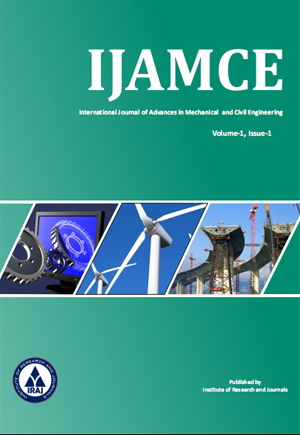Publish In |
International Journal of Advances in Mechanical and Civil Engineering (IJAMCE)-IJAMCE |
 Journal Home Volume Issue |
||||||||
Issue |
Volume-4,Issue-5 ( Oct, 2017 ) | |||||||||
Paper Title |
Use of Maturity Method for Determining Early-Age Strength of Concrete | |||||||||
Author Name |
Ohhoon Kwon, Mang Tia, Larry C. Muszynski, Michael Bergin | |||||||||
Affilition |
Department of Civil and Coastal Engineering, University of Florida, Gainesville, U.S.A School of Building Construction, University of Florida, Gainesville, U.S.A Florida Department of Transportation, Gainesville, U.S.A | |||||||||
Pages |
1-5 | |||||||||
Abstract |
This study investigated the use of maturity method to determine the early-age strength of concrete in slab replacement application. The main objectives were to evaluate the possible effects of different curing environments on the predicted strength of concrete from the maturity method and to determine the most appropriate procedure to be used to obtain accurate predicted strength of concrete. Two maturity functions, namely the Nurse-Saul and Arrhenius maturity functions, were evaluated. The effects of variation of fresh concrete properties on the predicted strength of the concrete were also evaluated. The Arrhenius maturity function with an activation energy of 33,500 J/mol was chosen for maturity-strength prediction as it showed consistent maturity-strength relationships developed by various groups of specimens cured under various conditions. It was also found that different curing conditions did not have any significant effect on the Arrhenius maturity-strength relationships at early age while variation in fresh concrete properties could have substantial effects on the maturity-strength relationships. Based on the results of laboratory experiments, it is recommended that when the actual concrete used at the project site has a different water-cement ratio, or has fresh concrete properties different by more than ± 2.5 cm (1 inch) in slump and/or ±1 % in air content from those of the concrete used in developing the maturity-strength relationship, the developed maturity-strength relationship should not be used to make maturity-strength prediction without making proper adjustments to the predicted strength to account for the changes in the fresh concrete properties. Based on the findings from this study, a testing protocol for the generation of maturity-strength curve for prediction of early-age compressive strength of concrete used in slab replacement project was recommended. Keywords: Maturity Method, Nurse-Saul, Arrhenius, Early-Age Strength of Concrete, Curing Time, Curing Condition, Compressive Strength. | |||||||||
| View Paper | ||||||||||